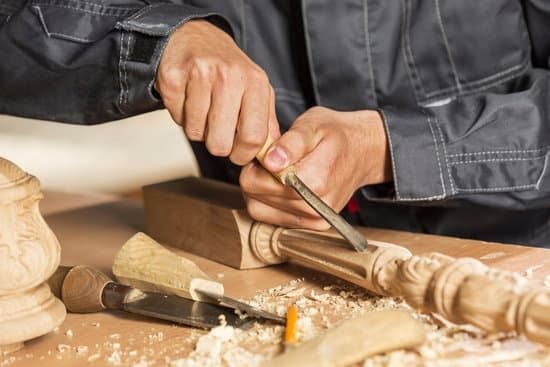Japanese woodworking has a long-standing tradition of craftsmanship and precision, with a wide range of tools that are highly regarded for their quality and performance. In this comprehensive guide, we will delve into the world of the best Japanese woodworking tools, exploring their history, functionality, and where to find authentic options. Whether you’re a seasoned woodworker or just starting out, these tools are a must-have for anyone looking to elevate their woodworking projects to the next level.
The art of Japanese woodworking goes back centuries, with a rich history that is deeply rooted in tradition and meticulous attention to detail. From hand planes to chisels and pull saws, each tool is crafted with precision and expertise that has been passed down through generations. By understanding the origins of these tools, we can gain a deeper appreciation for their significance in the world of woodworking.
In this article, we will take an in-depth look at the top Japanese woodworking tools, uncovering the beauty and functionality of traditional hand planes, chisels, saws, and accessories. Whether you’re interested in learning about the craftsmanship behind these tools or looking for recommendations on where to purchase authentic options, this guide will provide valuable insight into the world of Japanese woodworking.
The Art of Japanese Woodworking
Japanese woodworking has a rich history that dates back centuries, and its traditions have been passed down through generations. The art of Japanese woodworking is deeply rooted in the country’s culture and has become renowned for its precision, attention to detail, and respect for the natural qualities of wood. This traditional craft has also played a significant role in shaping the architecture, furniture, and everyday tools in Japan.
The history of Japanese woodworking can be traced back to the Jomon period, which began around 14,000 BC. During this time, primitive tools made from stone and bone were used for woodworking. As the centuries progressed, Japanese woodworking techniques continued to evolve and improve, especially during the Edo period from 1603 to 1868. It was during this time that distinct styles and methods of woodworking emerged, laying the foundation for what we recognize as traditional Japanese woodworking today.
One of the key aspects that sets Japanese woodworking apart is its focus on handcrafted tools and an emphasis on craftsmanship rather than mass production. Traditional Japanese woodworking tools are often handmade by skilled artisans who pay meticulous attention to detail. These tools are designed to be efficient, precise, and durable, making them highly sought after by woodworkers around the world.
In fact, many consider the best Japanese woodworking tools to be superior in quality and functionality when compared to their Western counterparts. From hand planes and chisels to saws and other accessories, these tools have become synonymous with excellence in craftsmanship within the woodworking community globally.
Top Japanese Woodworking Tools
Japanese woodworking tools are renowned for their precision, durability, and unparalleled craftsmanship. Whether you are a seasoned woodworker or just starting out, incorporating the best Japanese woodworking tools into your collection can elevate your projects to new levels. Here is a comprehensive guide to some of the top Japanese woodworking tools that every woodworking enthusiast should consider adding to their arsenal.
Japanese Hand Planes
Japanese hand planes, also known as kanna, have been a staple in traditional Japanese woodworking for centuries. They are meticulously crafted from high-quality steel and feature a wooden body that allows for precise control and smooth operation. The combination of superior blade sharpness and ergonomic design makes Japanese hand planes a must-have for any woodworking workshop.
Chisels and Saws
Japanese chisels and saws are revered for their exceptional sharpness and cutting accuracy. The chisels, known as nomi, are designed to withstand heavy-duty use and provide clean, precise cuts. Japanese saws, such as the dozuki and ryoba, are engineered to cut on the pull stroke, resulting in greater control and efficiency compared to Western-style push saws.
Pull Saws
Japanese pull saws, or nokogiri, are prized for their thin blades and the ability to produce incredibly fine cuts with minimal effort. Their unique design allows for greater flexibility when maneuvering through tight spaces or intricate patterns. Whether it’s crosscutting or ripping, these pull saws are essential for any woodworker seeking precision and finesse in their work.
Incorporating the best Japanese woodworking tools into your workshop can significantly enhance the quality of your projects while embracing the rich tradition of Japanese craftsmanship. From hand planes to chisels and saws to pull saws, each tool offers unparalleled precision and superior performance that can elevate your woodworking experience to new heights.
Traditional Japanese Hand Planes
When it comes to traditional Japanese woodworking, hand planes are considered an essential tool for creating smooth and precise surfaces on wood. These hand planes, also known as kanna, have been part of the Japanese woodworking tradition for centuries and are still highly valued by woodworkers around the world.
One of the main reasons why traditional Japanese hand planes are a must-have is their superior craftsmanship and design. Unlike Western hand planes, which are pushed along the wood, Japanese hand planes are pulled towards the user. This unique design allows for greater control and precision when smoothing out surfaces, making them ideal for intricate woodworking projects.
Additionally, the blades of traditional Japanese hand planes are made from high-quality steel that is able to hold a sharp edge for a longer period of time compared to other types of hand planes. This means that woodworkers can achieve consistently smooth results without having to constantly sharpen or replace their blades.
Overall, traditional Japanese hand planes are revered for their impeccable craftsmanship, superior design, and exceptional performance in achieving precise and smooth surfaces on wood. Whether you’re a professional woodworker or a hobbyist, investing in the best Japanese woodworking tools such as traditional hand planes can truly elevate your woodworking experience and craftsmanship.
Top Reasons to Consider Traditional Japanese Hand Planes
- Superior craftsmanship and design
- Unique pulling motion for greater control and precision
- High-quality steel blades for long-lasting sharpness
Uncovering the Beauty of Japanese Chisels and Saws
Japanese chisels and saws are renowned for their precision, quality, and beauty. These traditional tools have been perfected over centuries and continue to be highly sought after by woodworkers around the world. In this section, we will delve into the world of Japanese chisels and saws, exploring their unique features and why they are considered essential for woodworking enthusiasts.
The Beauty of Japanese Chisels
Japanese chisels, known as “nomi,” are prized for their exceptional sharpness and edge retention. Crafted with high-quality steel and featuring a hollow-ground back, these chisels provide unparalleled control and accuracy when working with wood. The hand-forged blades of Japanese chisels also exhibit exquisite craftsmanship, often adorned with decorative patterns or kanji characters that reflect the heritage of the blade’s maker. Woodworkers appreciate the ergonomic design of Japanese chisels, which allows for comfortable handling during prolonged use.
The Precision of Japanese Saws
Japanese saws, or “nokogiri,” differ significantly from Western saws in both design and cutting technique. With their thin blades and pull-stroke action, Japanese saws produce incredibly fine cuts with minimal effort. The teeth of these saws are meticulously crafted to ensure clean and accurate cuts, making them ideal for intricate joinery work and delicate woodworking projects. Additionally, the lightweight nature of Japanese saws allows for greater maneuverability and control, enabling woodworkers to achieve precise cuts with ease.
Why They Are Essential Tools for Woodworking Enthusiasts
The combination of Japanese chisels and saws offers woodworkers unparalleled precision, superior cutting performance, and a deep connection to the rich tradition of Japanese woodworking. Whether it’s crafting joinery with fine tolerances or creating delicate details in furniture making, these tools excel in delivering the highest level of craftsmanship. Their versatility makes them indispensable for both seasoned professionals and hobbyists alike.
As we continue to explore the top Japanese woodworking tools in this comprehensive guide, it becomes clear that Japanese chisels and saws are not only beautiful to behold but also essential for anyone looking to elevate their woodworking skills to new heights.
The Magic of Japanese Pull Saws
Japanese pull saws are known for their precision, efficiency, and impeccable cutting ability. These saws have been used for centuries in traditional Japanese woodworking, and they continue to be valued by woodworkers around the world for their unique design and exceptional performance. In this section, we will take a detailed look at the magic of Japanese pull saws, exploring their features, benefits, and why they are considered some of the best Japanese woodworking tools available.
Unique Design and Functionality
One of the key features that sets Japanese pull saws apart from traditional Western saws is their unique design. Unlike push saws, which cut on the push stroke, Japanese pull saws cut on the pull stroke. This design allows for greater control and accuracy when making cuts, as the blade is under tension during use. Additionally, Japanese pull saws are typically thinner and more flexible than their Western counterparts, allowing for finer cuts with less effort.
Superior Cutting Performance
The blade of a Japanese pull saw is incredibly sharp and precise, resulting in clean and accurate cuts in various types of woods. Whether it’s crosscutting, rip-cutting, or making delicate joinery cuts, these saws excel in delivering smooth and splinter-free results. The thin kerf of a Japanese pull saw also means that there is less material wastage during cutting, making it an eco-friendly option for woodworkers.
Versatility and Adaptability
Japanese pull saws come in a variety of sizes and tooth configurations to accommodate different woodworking tasks. Whether it’s a dozuki for fine joinery work or a ryoba for general-purpose cutting, there is a Japanese pull saw suitable for every woodworking need. Woodworkers can also choose between single-edge or double-edge blades depending on their preference and specific requirements.
Must-Have Japanese Woodworking Accessories for Precision and Quality
Japanese woodworking is known for its precision, quality, and attention to detail. In addition to the essential tools like hand planes, chisels, and saws, there are several accessories that are must-haves for any woodworker looking to embrace the craftsmanship of Japanese woodworking. These accessories not only enhance the precision of your work but also contribute to the overall quality of your finished piece.
One essential accessory is a sharpening stone, known as “Toko.” Japanese sharpening stones are renowned for their high quality and ability to produce razor-sharp edges on woodworking tools. They come in various grit sizes for different stages of sharpening, from initial grinding to honing the final edge. The best Japanese woodworking tools are only as good as their sharpness, making a quality sharpening stone an indispensable accessory.
Another must-have accessory is a precision marking tool, such as a marking knife or a marking gauge. Japanese woodworking places great emphasis on precision joinery and accurate layout lines. A high-quality marking tool allows woodworkers to make precise cuts and markings with confidence, ensuring that every joint fits perfectly and every measurement is exact.
Additionally, a Japanese pull saw set is an important accessory for achieving clean and accurate cuts. These saws come in various tooth configurations for different types of cuts and are designed to cut on the pull stroke rather than the push stroke like Western saws. This unique design allows for greater control and accuracy when cutting both across and along the grain of the wood.
Overall, incorporating these must-have Japanese woodworking accessories into your toolkit will elevate your craft to new levels of precision and quality.
| Accessory | Description |
|---|---|
| Sharpening Stone | A high-quality stone for producing razor-sharp edges on woodworking tools. |
| Precision Marking Tool | An essential tool for making precise cuts and layout lines in Japanese woodworking. |
| Japanese Pull Saw Set | Saws designed for clean and accurate cuts with greater control and accuracy. |
Where to Purchase Authentic Japanese Woodworking Tools
When it comes to purchasing authentic Japanese woodworking tools, it is important to do thorough research to ensure that you are investing in high-quality, reliable products. One of the best ways to find these tools is by reaching out to specialist retailers that specialize in Japanese woodworking tools. These retailers often have a deep understanding of the craft and can provide valuable insights and recommendations based on your specific needs.
Another reliable source for authentic Japanese woodworking tools is through online marketplaces that specialize in handcrafted and traditional items. Look for sellers with a strong reputation and positive reviews from satisfied customers. Additionally, consider reaching out to woodworking forums and communities where enthusiasts often share their experiences and recommendations for purchasing the best Japanese woodworking tools.
It’s also worth considering purchasing directly from Japanese manufacturers or artisans who specialize in creating these traditional tools. This not only ensures the authenticity of the products but also provides a direct line of communication with the creators, allowing you to gain insight into their craftsmanship and dedication to the art of Japanese woodworking.
| Recommended Retailers | Website |
|---|---|
| Japan Woodworker | www.japanwoodworker.com |
| Hida Tool & Hardware Company | www.hidatool.com |
| Takumi Japan | www.takumi-japan.com |
By considering these tips and recommendations, you can ensure that you are purchasing the best Japanese woodworking tools available, allowing you to fully embrace the craftsmanship and precision that comes with traditional Japanese woodworking.
Conclusion
In conclusion, Japanese woodworking tools represent a true embodiment of craftsmanship and precision that has been perfected over centuries. From traditional hand planes to chisels and saws, these tools offer unparalleled quality and are a must-have for any woodworker who values precision and attention to detail. The art of Japanese woodworking is deeply rooted in tradition and history, and these tools have played a crucial role in shaping the country’s rich woodworking heritage.
When it comes to investing in the best Japanese woodworking tools, it’s important to recognize the unparalleled quality and craftsmanship that these tools offer. Traditional hand planes, chisels, saws, and pull saws are essential for anyone seeking to elevate their woodworking projects to new levels of precision and finesse. With their meticulous design and superior functionality, these tools are a testament to the dedication and skill of Japanese artisans.
For those looking to purchase authentic Japanese woodworking tools, it’s essential to seek out reputable sources that specialize in offering genuine products. Whether it’s through trusted retailers or directly from Japan, investing in high-quality Japanese woodworking tools will undoubtedly enhance the craftsmanship of your projects. By embracing the tradition of Japanese woodworking and incorporating these exceptional tools into your craft, you can elevate the quality and precision of your work to new heights.
Frequently Asked Questions
What Are the Best Japanese Power Tool Brands?
Some of the best Japanese power tool brands include Makita, Hitachi, and Panasonic. These brands are known for their high-quality and durable power tools that are popular among both professionals and DIY enthusiasts.
Which Is the Best Japanese Pliers Brand?
When it comes to pliers, the best Japanese brand is undoubtedly Engineer. Engineer pliers are well-regarded for their precision, durability, and ergonomic design. They offer a wide range of pliers suitable for various tasks.
Why Japanese Tools Are Better?
Japanese tools are often considered better due to their focus on precision, durability, and innovation. Japanese manufacturers have a reputation for using high-quality materials and incorporating advanced technology into their tools. This results in reliable and efficient products that are highly valued in the industry.

Hi everyone! I’m a woodworker and blogger, and this is my woodworking blog. In my blog, I share tips and tricks for woodworkers of all skill levels, as well as project ideas that you can try yourself.





